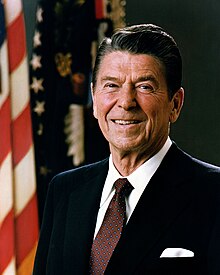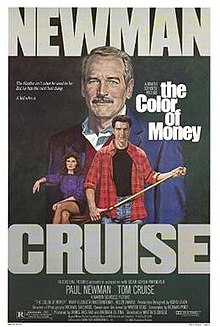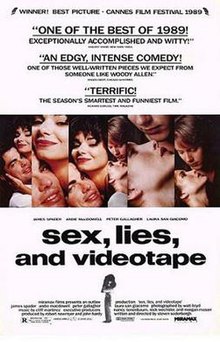Scorsese's First Attempt
Nikos Kazantzakis' The Last Temptation of Christ (which, for the record, I haven't read) was published in 1955. Due to its explosive subject matter, the book was banned by the Catholic Church and Kazantzakis was excommunicated from the Greek Orthodox Church shortly before his death in 1957.
During the production of his 1972 Roger Corman produced crime film Boxcar Bertha, actress Barbara Hershey showed Scorsese the book, determining whether he should make a film adaptation or not. Scorsese, who is raised Catholic and even once considered being a priest before pursuing his career as a filmmaker, agreed that the story has potential and it has become a passion project for him ever since.
After the years of successes with Mean Streets, Taxi Driver, Raging Bull, and The King of Comedy, Scorsese has decided to make the film for Paramount Pictures in 1983. A script was written by Paul Schrader (who worked with Scorsese on Taxi Driver and Raging Bull), sets were being built in Israel, and actors have already been chosen. Everything was ready to go.... until the protest letters came in.
When the project was announced to the public, right wing fundamentalist Christians, who helped to elect Ronald Regan for President Of The United States in the early 1980's, have heard about the film and began to write protest letters and death threats to Paramount Pictures. In the meantime, the theater chain, United Artists Theaters, told Paramount that they will not show the movie, because they're worried on how audiences would respond to the film. Caught between the religious and financial pressure, Paramount had no choice but to shut production down in Thanksgiving 1983.
Scorsese's Second Attempt and Production
Paramount's cancellation of The Last Temptation of Christ left Scorsese very dissatisfied. Since then, he has made After Hours and The Color of Money (pictured here) for Warner Bros and Disney's Touchstone Pictures respectively. He also directed an episode for the Steven Spielberg produced TV show Amazing Stories and also directed the music video of the popular Michael Jackson song Bad.
In early 1987, Michael Ovitz, founder of the Creative Artists Agency in 1975, set up a meeting with Universal Pictures, then headed by Tom Pollock, Sid Sheinberg, and Lew Wasserman. Universal greenlit the film for $7 million under the condition that Scorsese will make more movies for the studio. The other films were Cape Fear and Casino.
Originally, he wanted to shoot in Israel, but to keep costs down, the production moved to Morocco instead. Shooting took place between October to December of 1987. When the film was in pre-production in 1983, Aidan Quinn and Sting were cast as Jesus and Pontius Pilate, but at this point, they were unavailable. So Scorsese cast Willem Dafoe and David Bowie in their respective roles instead. Barbara Hershey was cast to play Mary Magdalene and Harvey Keitel was cast to play Judas. Due to the film's low budget, the shoot in Morocco was very difficult, resulting in the film's minimalist aesthetics.
Controversy, Moral Panic, and Critical Reception
Right wing Christian groups are at it again, only this time, they're in full force, as they started to picket theaters that were showing the film. The protests were spearheaded by Tim Penland, a liaison hired to prevent protests, quit to protest against the film himself. Televangelists like Mother Angelica and other Christian leaders joined the pack. Some of them even requested that Universal hand them copies of the film so they could be destroyed. Universal rightfully said no to this option. They even picketed and boycotted Universal Pictures and its then parent company, MCA. Scorsese even received death threats and needed bodyguards for his public appearances.
But the worst act of hypocrisy came from evangelist Robert L. Hymers Jr. He led people to the home of Universal executive Lew Wasserman, who is Jewish, picketed on his front yard, performed passion plays, and shouted Anti-Semitic slurs. Nice job ignoring the Jewish roots of Christianity Reverend Hymers. The funniest thing about the moral panic surrounding the film is that a large majority of the film's critics haven't actually seen the film.
When the film finally opened in August 1988, despite growing outrage from conservative Christians, it opened to positive reviews from film critics and was even defended by some religious leaders who have seen the film. Siskel and Ebert praised the film highly. Gene Siskel later called the film his favorite film of 1988 and Roger Ebert gave it 4 stars both in his original 1988 review and on his Great Movies evaluation in 2008. It even got a standing ovation in New York's Ziegfeld Theater according to film critic Jay Cocks, who wrote some uncredited revisions to the script.
But what Siskel and Ebert said wasn't enough to end the protests. It even got to the point that some of the protesters even caused physical harm to film goers. In October 1988, a Christian extremist set fire to a movie theater in Paris, sending 13 people to the hospital. I couldn't find information on its worldwide gross, but in the United States, it grossed over $8 million and Scorsese was awarded with an Oscar nomination.
The controversy was so strong, it became impossible to find. Even though the film was officially released on VHS and Laserdisc by Universal in 1989, stores like the then-dominant Blockbuster Video have banned copies of the film. You just have to look for it at mom and pop stores if they have it. But thankfully, it has reached an audience when the film is released on Laserdisc, DVD, and Blu Ray, by The Criterion Collection.
My Honest Thoughts
I'm raised Roman Catholic, so when I first heard about the film, I've since been aware on how notorious the film's reputation was. So I started watching the film on cable and seen it 5 times. It turns out that I wasn't offended by this movie at all. In fact, I was really moved by the film and really encouraged me to think about Jesus very seriously. Now, I've read stories in the Bible where Jesus was tempted by Satan to renounce God and become human. So, by creating a fictional conflict at the third act of the film, when Jesus is tempted by Satan, pretending to be his guardian angel, into getting married and having kids, it seems to be saying that if Jesus haven't died on the cross and lived a normal life as he wanted to earlier in the film, there would be no salvation of mankind. That's just my reading of the film's message. I don't think the film slanders Jesus in any way (it doesn't even claim to be based on the Gospels anyways), I think it's the total opposite of what many of the film's critics believed it would have done. In fact, as I said before, a large majority of the protesters didn't even watch the film. To be fair, I understand why a movie about a less perfect Jesus wouldn't be for everybody and why certain people wouldn't want to see it. But passing judgement and requesting to ban a film without even watching the film really triggers me and is a perfect example on why I don't like censorship. Again, the film is not for everyone, but the people who were interested in seeing the film weren't even allowed to take that opportunity because of the Christian right. I'm happy to be born and raised in a nation where we have free speech.
Overall, The Last Temptation of Christ is a movie made with passion and respect for Jesus Christ. It doesn't desecrate Christ, nor does it exploit faith, as propaganda films like God's Not Dead traditionally have. Scorsese validates his message by providing us with the most relatable and sympathetic Jesus ever put on film in my opinion. It's not for everyone and this review is not written to offend people with strong beliefs. But if you have an open mind, I would recommend that you give it a watch if your local Barnes and Noble has a DVD or Blu Ray from The Criterion Collection. One of my favorite films from Martin Scorsese.









